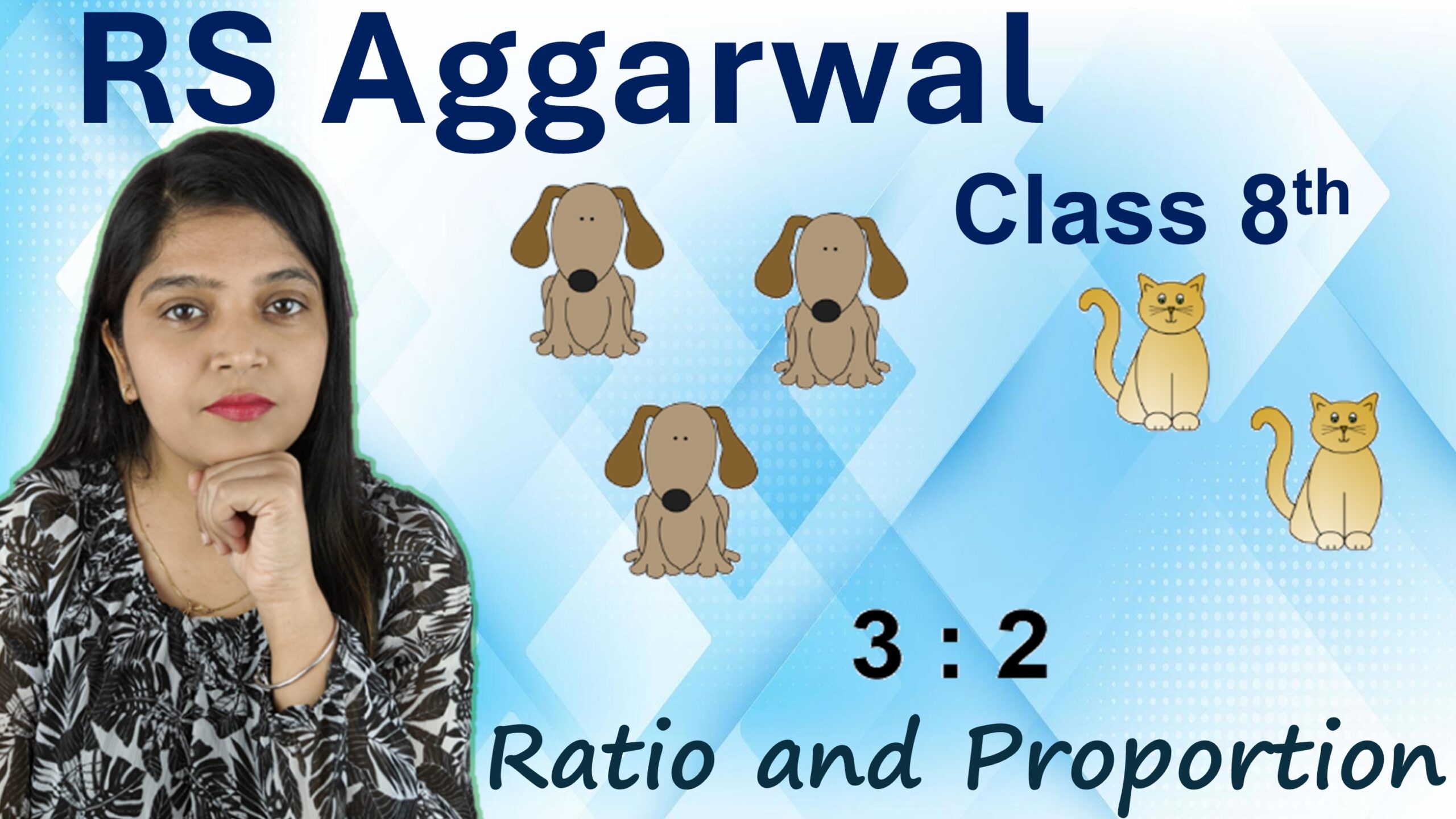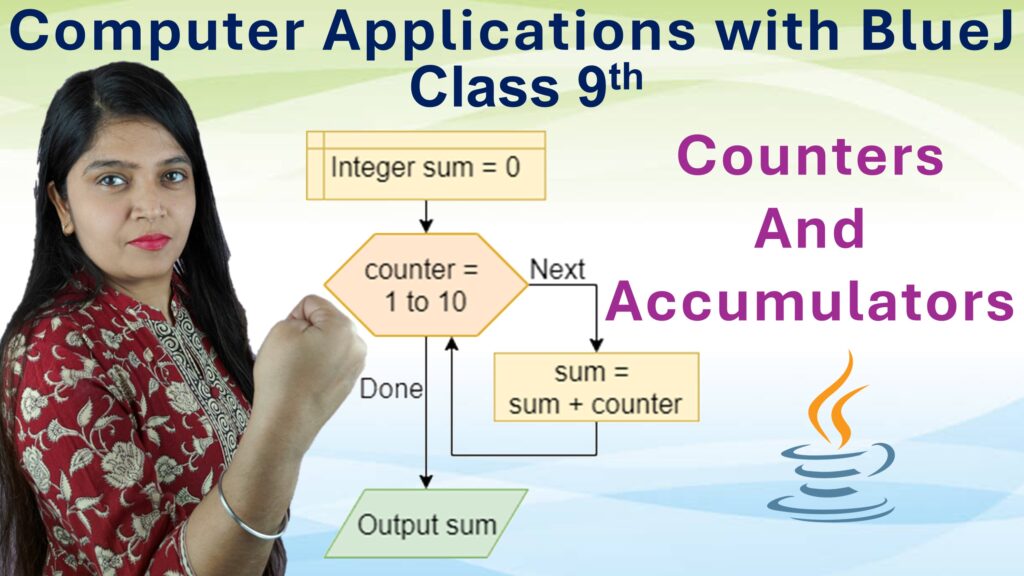Exercise: 9-C
Multiple Choice Questions
Q1: In a ratio which is equal to 5 : 8, the antecedent is 40, then the consequent is:
Step 1: Let the ratio be \(5 : 8 = 40 : x\)
Antecedent = 40 (i.e., first term of the ratio)
Step 2: Use proportion:
\[
\frac{5}{8} = \frac{40}{x} \\
\Rightarrow 5x = 40 \times 8 = 320 \\
\Rightarrow x = \frac{320}{5} = 64
\]Answer: c. 64
Q2: 0.5 of a number is equal to 0.07 of another. The ratio of the numbers is:
Step 1: Let the first number be \(x\), and the second number be \(y\).
Given:
\[
0.5x = 0.07y
\]Step 2: Rearranging to find the ratio:
\[
\frac{x}{y} = \frac{0.07}{0.5} = \frac{7}{100} \div \frac{1}{2} = \frac{7}{100} \times \frac{2}{1} = \frac{14}{100} = \frac{7}{50}
\]Answer: d. 7 : 50
Q3: If \(2x = 3y = 4z\), then \(x : y : z\) is
Step 1: Let the common value be \(k\).
\[
2x = 3y = 4z = k
\]Step 2: Express \(x,\ y,\ z\) in terms of \(k\):
\[
x = \frac{k}{2},\quad y = \frac{k}{3},\quad z = \frac{k}{4}
\]Step 3: Find ratio \(x : y : z\):
\[
x : y : z = \frac{k}{2} : \frac{k}{3} : \frac{k}{4}
\]
Multiply all terms by LCM of denominators = 12:
\[
\frac{k}{2} \times 12 = 6k,\quad \frac{k}{3} \times 12 = 4k,\quad \frac{k}{4} \times 12 = 3k \\
\Rightarrow x : y : z = 6k : 4k : 3k
= 6 : 4 : 3
\]Answer: d. 6 : 4 : 3
Q4: If \(x : y = 7 : 9\) and \(y : z = 5 : 4\), then what is \(x : y : z\)?
\(x : y = 7 : 9\)
\(y : z = 5 : 4\)
Step 1: To combine both ratios, make the common term \(y\) equal.
LCM of 9 and 5 = 45
Adjust both ratios so that \(y = 45\):
– \(x : y = 7 : 9\) ⇒ multiply both by 5 ⇒ \(x : y = 35 : 45\)
– \(y : z = 5 : 4\) ⇒ multiply both by 9 ⇒ \(y : z = 45 : 36\)
Step 2: Now combine the two:
\[
x : y : z = 35 : 45 : 36
\]Answer: b. 35 : 45 : 36
Q5: The fourth proportional to 3, 5 and 21 is
We are given three numbers: 3, 5, and 21.
Let the fourth proportional be \(x\).
Step 1: Use the property of fourth proportion:
If \(a : b = c : d\), then \(d\) is the fourth proportional.
Here,
\[
\frac{3}{5} = \frac{21}{x}
\]Step 2: Cross-multiply:
\[
3x = 5 \times 21 = 105 \\
\Rightarrow x = \frac{105}{3} = 35
\]Answer: a. 35
Q6: Mean proportional between 7 and 28 is:
If two numbers are \(a\) and \(b\), then the mean proportional is:
\[
\sqrt{a \times b}
\]Step 1: Apply the formula:
\[
\text{Mean Proportional} = \sqrt{7 \times 28} = \sqrt{196}
\]Step 2: Simplify the square root:
\[
\sqrt{196} = 14
\]Answer: c. 14
Q7: Third proportional to 9 and 12 is
If \(a : b = b : c\), then \(c\) is called the third proportional to \(a\) and \(b\).
Here,
\[
a = 9,\quad b = 12,\quad \text{Let } c = x
\]Step 1: Set up the proportion:
\[
\frac{9}{12} = \frac{12}{x}
\]Step 2: Cross-multiply:
\[
9x = 12 \times 12 = 144 \\
\Rightarrow x = \frac{144}{9} = 16
\]Answer: c. 16
Q8: A fraction bears the same ratio to \(\frac{1}{27}\) as \(\frac{3}{7}\) does to \(\frac{5}{9}\). The fraction is
Let the required fraction be \(x\).
According to the question:
\[
\frac{x}{\frac{1}{27}} = \frac{\frac{3}{7}}{\frac{5}{9}}
\]Step 1: Simplify the right-hand side:
\[
\frac{\frac{3}{7}}{\frac{5}{9}} = \frac{3}{7} \times \frac{9}{5} = \frac{27}{35}
\]Step 2: Solve for \(x\):
\[
\frac{x}{\frac{1}{27}} = \frac{27}{35} \\
\Rightarrow x = \frac{1}{27} \times \frac{27}{35} = \frac{1}{35}
\]Answer: b. \(\frac{1}{35}\)
Q9: What must be added to each term of the ratio 49 : 68 so that it becomes 3 : 4?
Let the number to be added be \(x\).
Then the new ratio becomes:
\[
\frac{49 + x}{68 + x} = \frac{3}{4}
\]Step 1: Cross-multiply:
\[
4(49 + x) = 3(68 + x) \\
\Rightarrow 196 + 4x = 204 + 3x
\]Step 2: Bring like terms together:
\[
4x – 3x = 204 – 196 \\
\Rightarrow x = 8
\]Answer: a. 8
Q10: What least number must be added to each one of 6, 14, 18, 38 to make them in proportion?
Let the number to be added be \(x\).
Then the new numbers become:
\[
6 + x,\ 14 + x,\ 18 + x,\ 38 + x
\]For numbers to be in proportion:
\[
\frac{6 + x}{14 + x} = \frac{18 + x}{38 + x}
\]Step 1: Cross-multiply:
\[
(6 + x)(38 + x) = (14 + x)(18 + x)
\]Step 2: Expand both sides:
Left Side:
\[
(6 + x)(38 + x) = 228 + 6x + 38x + x^2 = x^2 + 44x + 228
\]Right Side:
\[
(14 + x)(18 + x) = 252 + 14x + 18x + x^2 = x^2 + 32x + 252
\]Step 3: Equate both sides:
\[
x^2 + 44x + 228 = x^2 + 32x + 252
\]Cancel \(x^2\) from both sides:
\[
44x + 228 = 32x + 252 \\
\Rightarrow 44x – 32x = 252 – 228 \\
\Rightarrow 12x = 24 \\
\Rightarrow x = 2
\]Answer: b. 2
Q11: What least number must be subtracted from each of the numbers 14, 17, 34, 42 so that the remainders may be proportional?
Let the number to be subtracted be \(x\).
Then the new numbers become:
\[
14 – x,\quad 17 – x,\quad 34 – x,\quad 42 – x
\]Step 1: According to the question, the numbers must be in proportion:
\[
\frac{14 – x}{17 – x} = \frac{34 – x}{42 – x}
\]Step 2: Cross-multiply:
\[
(14 – x)(42 – x) = (17 – x)(34 – x)
\]Step 3: Expand both sides:
Left Side:
\[
14 \cdot 42 – 14x – 42x + x^2 = 588 – 56x + x^2
\]Right Side:
\[
17 \cdot 34 – 17x – 34x + x^2 = 578 – 51x + x^2
\]Step 4: Equating both sides:
\[
588 – 56x + x^2 = 578 – 51x + x^2
\]Cancel \(x^2\) from both sides:
\[
588 – 56x = 578 – 51x \\
\Rightarrow 588 – 578 = 56x – 51x \\
\Rightarrow 10 = 5x \\
\Rightarrow x = 2
\]Answer: c. 2
Q12: If the ratio of A’s money to B’s money is 4 : 5 and that of B’s money to C’s money is 2 : 3 and A has ₹800, then C has:
A : B = 4 : 5
B : C = 2 : 3
A = ₹800
Step 1: Make B’s value same in both ratios.
LCM of 5 and 2 = 10
So, multiply:
– A : B = 4 : 5 ⇒ 8 : 10 (×2)
– B : C = 2 : 3 ⇒ 10 : 15 (×5)
Step 2: Combine all three:
A : B : C = 8 : 10 : 15
Step 3: A has ₹800 → 8 parts = 800
So, 1 part = ₹100
C has 15 parts →
\[
15 \times 100 = ₹1500
\]Answer: c. ₹1500
Q13: A sum of ₹7000 is divided among A, B and C in such a way that the shares of A and B are in the ratio 2 : 3 and those of B and C are in the ratio 4 : 5. The amount received by C is:
A : B = 2 : 3
B : C = 4 : 5
Total = ₹7000
Step 1: Equalise the value of B in both ratios.
LCM of 3 and 4 = 12
Multiply:
– A : B = 2 : 3 → 8 : 12 (×4)
– B : C = 4 : 5 → 12 : 15 (×3)
Step 2: Now, combine:
A : B : C = 8 : 12 : 15
Step 3: Total parts =
\[
8 + 12 + 15 = 35\ \text{parts}
\]Each part = ₹7000 ÷ 35 = ₹200
Step 4: C’s share =
\[
15 \times 200 = ₹3000
\]Answer: c. ₹3000
Q14: A sum of ₹53 is divided among A, B and C in such a way that A gets ₹7 more than what B gets and B gets ₹8 more than what C gets. The ratio of their shares is
Let C’s share = ₹ x
Then,
B = ₹(x + 8)
A = ₹(x + 8 + 7) = ₹(x + 15)
Step 1: Total amount = ₹53
So,
\[
x + (x + 8) + (x + 15) = 53 \\
\Rightarrow 3x + 23 = 53 \\
\Rightarrow 3x = 30 \\
\Rightarrow x = 10
\]Step 2: Now find each share:
C = ₹10
B = ₹18
A = ₹25
Step 3: Their ratio is:
\[
A : B : C = 25 : 18 : 10
\]Answer: b. 25 : 18 : 10
Q15: A bag contains ₹600 in the form of one-rupee, 50-paise, and 25-paise coins in the ratio 3 : 4 : 12. The number of 25-paise coins is
Ratio of number of coins = 3 : 4 : 12
Let the number of coins be \(3x,\ 4x,\ 12x\) respectively.
Step 1: Convert all coin values to rupees:
– One-rupee coin = ₹1
– 50 paise = ₹0.50
– 25 paise = ₹0.25
Step 2: Total value of coins in ₹:
\[
= (3x \times 1) + (4x \times 0.50) + (12x \times 0.25) \\
= 3x + 2x + 3x = 8x
\]Step 3: Given total money = ₹600
So,
\[
8x = 600 \Rightarrow x = \frac{600}{8} = 75
\]Step 4: Number of 25-paise coins = \(12x = 12 \times 75 = 900\)
Answer: b. 900
Q16: A certain amount was divided between P and Q in the ratio 4 : 3. If Q’s share was ₹4800, the total amount was:
P : Q = 4 : 3
Q’s share = ₹4800
Step 1: Total parts in the ratio = 4 + 3 = 7 parts
Q’s share = 3 parts = ₹4800
Step 2: Find the value of 1 part:
\[
1\ \text{part} = \frac{4800}{3} = ₹1600
\]Step 3: Total amount = 7 parts =
\[
7 \times 1600 = ₹11200
\]Answer: a. ₹11200
Q17: The ratio of number of boys and girls in a school of 720 students is 7 : 5. How many more girls should be admitted to make the ratio 1 : 1?
Total students = 720
Boys : Girls = 7 : 5
Let number of boys = 7x, girls = 5x
Step 1: Add the ratio parts:
\[
7x + 5x = 12x = 720 \Rightarrow x = \frac{720}{12} = 60
\]So,
Boys = \(7x = 7 \times 60 = 420\)
Girls = \(5x = 5 \times 60 = 300\)
Step 2: Let \(y\) girls be added to make the number of girls equal to boys:
\[
300 + y = 420 \Rightarrow y = 420 – 300 = 120
\]Answer: b. 120
Q18: The prices of a scooter and a moped are in the ratio 9 : 5. If a scooter costs ₹6800 more than a moped, the price of a scooter is:
Scooter : Moped = 9 : 5
Difference in price = ₹6800
Step 1: Let the common multiplying factor be ₹x.
Then,
Scooter price = \(9x\)
Moped price = \(5x\)
Step 2: According to the question:
\[
9x – 5x = 4x = 6800 \Rightarrow x = \frac{6800}{4} = 1700
\]Step 3: Now find the price of the scooter:
\[
9x = 9 \times 1700 = ₹15300
\]Answer: b. ₹15300
Q19: The ratio of zinc and copper in a brass piece is 13 : 7. How much zinc will be there in 100 kg of such a piece?
Zinc : Copper = 13 : 7
Total weight = 100 kg
Step 1: Total parts =
\[
13 + 7 = 20\ \text{parts}
\]Step 2: Zinc’s share =
\[
\frac{13}{20} \times 100 = 65\ \text{kg}
\]Answer: d. 65 kg
Q20: Two numbers are in the ratio 3 : 5. If 9 be subtracted from each, then they are in the ratio 12 : 23. The second number is:
Let the two numbers be \(3x\) and \(5x\).
Step 1: Subtract 9 from both:
\[
\frac{3x – 9}{5x – 9} = \frac{12}{23}
\]Step 2: Cross-multiply:
\[
23(3x – 9) = 12(5x – 9) \\
69x – 207 = 60x – 108
\]Step 3: Rearrange terms:
\[
69x – 60x = -108 + 207 \\
\Rightarrow 9x = 99 \\
\Rightarrow x = 11
\]Step 4: Second number = \(5x = 5 \times 11 = 55\)
Answer: d. 55
Q21: Two whole numbers whose sum is 64 cannot be in the ratio:
Step 1:Let the ratio be \(a : b\).
Then the two numbers can be written as:
\[
a \cdot x\ \text{and}\ b \cdot x\ \Rightarrow a x + b x = x(a + b) = 64 \\
\Rightarrow x = \frac{64}{a + b}
\]To get whole numbers, \(x\) must be an integer ⇒ \(a + b\) must divide 64 exactly.
Now, check each option:
a. 5 : 3 ⇒ a + b = 8
\[
x = \frac{64}{8} = 8 \Rightarrow \text{Valid}
\]b. 7 : 1 ⇒ a + b = 8
\[
x = \frac{64}{8} = 8 \Rightarrow \text{Valid}
\]c. 3 : 4 ⇒ a + b = 7
\[
x = \frac{64}{7} \notin \mathbb{Z} \Rightarrow \text{Not valid}
\]d. 9 : 7 ⇒ a + b = 16
\[
x = \frac{64}{16} = 4 \Rightarrow \text{Valid}
\]Answer: c. 3 : 4
Q22: Out of the ratios (7 : 20), (13 : 25), (17 : 30), (11 : 15), the smallest is:
Step 1: Convert each ratio into decimal (for easy comparison):
\[
\frac{7}{20} = 0.35 \\
\frac{13}{25} = 0.52 \\
\frac{17}{30} \approx 0.5667 \\
\frac{11}{15} \approx 0.7333
\]Step 2: Now compare all values:
0.35 < 0.52 < 0.5667 < 0.7333
So, the smallest ratio is \(7 : 20\)
Answer: a. 7 : 20
Q23: In a ratio which is equal to 5 : 8, the antecedent is 40, then the consequent is:
Ratio = 5 : 8
Antecedent (first term) = 40
Step 1: Let the ratio be multiplied by \(x\):
\[
5x = 40 \Rightarrow x = \frac{40}{5} = 8
\]Step 2: Find the consequent:
\[
8x = 8 \times 8 = 64
\]Answer: c. 64







Leave a Comment